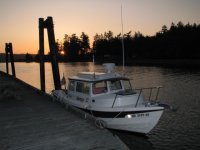A very complex subject is being perhaps overly simplified. Antenna gain is not as important as being made to be. Already mentioned is radiation pattern, amount of roll and pitch of the boat; antenna height is extremely important--no antenna will defy the laws of physics--although there can be Tropospheric ducting, which will allow hundred of miles of communication on 25 watts in the Marine VHF frequencies. "Sporadic E" ; ducting in the E layer of Ionosphere is rarer.
SWR is extremely important--Morad hand tests their antennas to be sure they are have SWR of less than 1.5 across the spectrum I test an antenna before I buy it--and pick the best--to get that SWR or less. I have seen some antennas in the store which have SWR greater than 2.
Doubling the gain will not usually double the range. Effective radiated power is the watch word vs "power". You have to increase the gain by at least 3 dB to notice any difference in reception. But that is not necessarily a doubling of the signal. With base loaded antennas there is a fair amount of manufacture hype. Half wave, 5/8 wave or full wavelength antennas are gong to be better. Antennas are in some ways better related to a standard--and measurement in dB
i (theoretical isotropic radiator) or dB
d(reference dipole antenna standard).
For me there is a very good reason to choose an antenna like this Morad--I would have purchased two if they were this price and were easily available when I was outfitting "Thisaway". The 8 foot glass antennas, are subject to being damaged with the relatively short cabin of the 22. I much prefer a short antenna (in my case the 36" base loaded whip by Metz or Shakesphere) so that it will not be used as a hand hold and broken or damaged in trailering. If any one grabs the short 1" SS tubing, it will hold up because of the sturdy ratchet base, and backing plate inside of the cabin.
This is a photo of one of my two VHF antennas folded down--same type of 1" SS tube base as the Morad would use.



